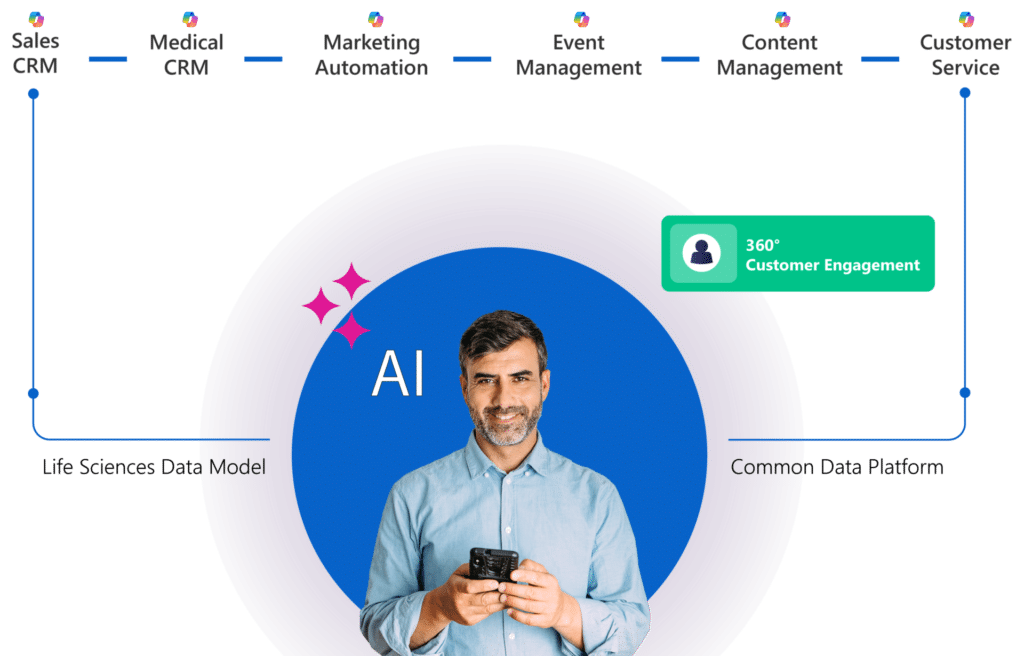Implementing a Customer Data Platform (CDP) in a life sciences organization can be transformative. It aligns your entire organization around healthcare providers (HCPs) and customers, increasing engagement, loyalty, and retention. This buyer’s guide will teach you how to deliver highly personalized experiences by unifying siloed data into a single 360-degree customer view that provides real-time, intelligent insights.
Key Benefits of a CDP:
- Competitive Advantage: Stay ahead by reacting quickly and proactively to customer behaviors and preferences.
- Personalized Interactions: Build deep customer connections across all business touchpoints, from marketing to sales to service.
- Informed Decision-Making: Use AI and machine learning models to predict customer intent and determine the best next actions.
- Accurate Measurement: Collect and analyze large volumes of data to measure the success of customer experience initiatives.
Potential Challenges and Hurdles:
- Data Governance:
- Challenge: Ensuring proper data governance can be complex, particularly in heavily regulated industries like life sciences.
- Solution: Establish clear policies and procedures for data handling and ensure compliance with all relevant regulations.
- Privacy Concerns:
- Challenge: Managing and protecting customer data while adhering to privacy laws and regulations (e.g., GDPR, HIPAA) is critical.
- Solution: Implement robust data protection measures and maintain customer transparency about data usage.
- Integration with Existing Systems:
- Challenge: Integrating the CDP with existing systems (e.g., CRM, ERP) can be technically challenging and resource-intensive.
- Solution: Plan for a phased integration approach, ensuring compatibility and minimal disruption to ongoing operations.
- Data Quality Issues:
- Challenge: Poor data quality can undermine the effectiveness of the CDP.
- Solution: Regularly audit and clean data, and implement processes for maintaining high data quality standards.
Aligning CDP Strategy with Organizational Goals:
- Broader Organizational Goals: Ensure that the CDP strategy supports and enhances your organization’s overarching goals.
- Stakeholder Support: Obtain buy-in from key stakeholders, including IT, marketing, sales, and compliance teams, to ensure a smooth implementation and ongoing support.
Checklist for Choosing the Right CDP:
- Define Your Needs: Understand your organization’s specific requirements and objectives.
- Evaluate Vendors: Assess potential CDP vendors based on their ability to meet your needs, scalability, and integration capabilities.
- Consider Costs: Analyze the total cost of ownership, including implementation, maintenance, and potential hidden costs.
- Assess Support and Training: Ensure the vendor provides adequate support and training to help your team maximize the CDP’s potential.
By considering these factors and addressing potential challenges, your life sciences organization can successfully implement a CDP, enhancing customer engagement, loyalty, and retention.
Ready to transform your life sciences organization with a Customer Data Platform?
Download our comprehensive guide now to learn how to deliver personalized experiences, unify your data, and overcome implementation challenges. Get your checklist for choosing the right CDP and start enhancing customer engagement, loyalty, and retention today.
Get a demo
Get a demo short
"*" indicates required fields
Discover how Exeevo CRM, an AI-powered life sciences customer engagement platform, has all the tools you need for commercial, medical, marketing, events, and customer service.

